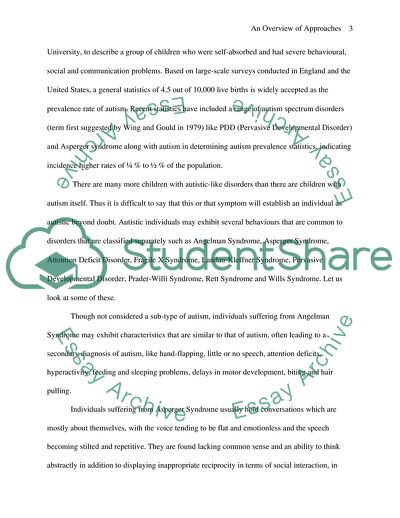Cite this document
(An Overview of Approaches to Autism Assignment Example | Topics and Well Written Essays - 3000 words, n.d.)
An Overview of Approaches to Autism Assignment Example | Topics and Well Written Essays - 3000 words. https://studentshare.org/psychology/1702915-describe-how-autism-may-be-explained-at-the-genetic-physiological-and-psychological-levels-and-show-how-different-explanations-contribute-to-our-overall-unders
An Overview of Approaches to Autism Assignment Example | Topics and Well Written Essays - 3000 words. https://studentshare.org/psychology/1702915-describe-how-autism-may-be-explained-at-the-genetic-physiological-and-psychological-levels-and-show-how-different-explanations-contribute-to-our-overall-unders
(An Overview of Approaches to Autism Assignment Example | Topics and Well Written Essays - 3000 Words)
An Overview of Approaches to Autism Assignment Example | Topics and Well Written Essays - 3000 Words. https://studentshare.org/psychology/1702915-describe-how-autism-may-be-explained-at-the-genetic-physiological-and-psychological-levels-and-show-how-different-explanations-contribute-to-our-overall-unders.
An Overview of Approaches to Autism Assignment Example | Topics and Well Written Essays - 3000 Words. https://studentshare.org/psychology/1702915-describe-how-autism-may-be-explained-at-the-genetic-physiological-and-psychological-levels-and-show-how-different-explanations-contribute-to-our-overall-unders.
“An Overview of Approaches to Autism Assignment Example | Topics and Well Written Essays - 3000 Words”. https://studentshare.org/psychology/1702915-describe-how-autism-may-be-explained-at-the-genetic-physiological-and-psychological-levels-and-show-how-different-explanations-contribute-to-our-overall-unders.


